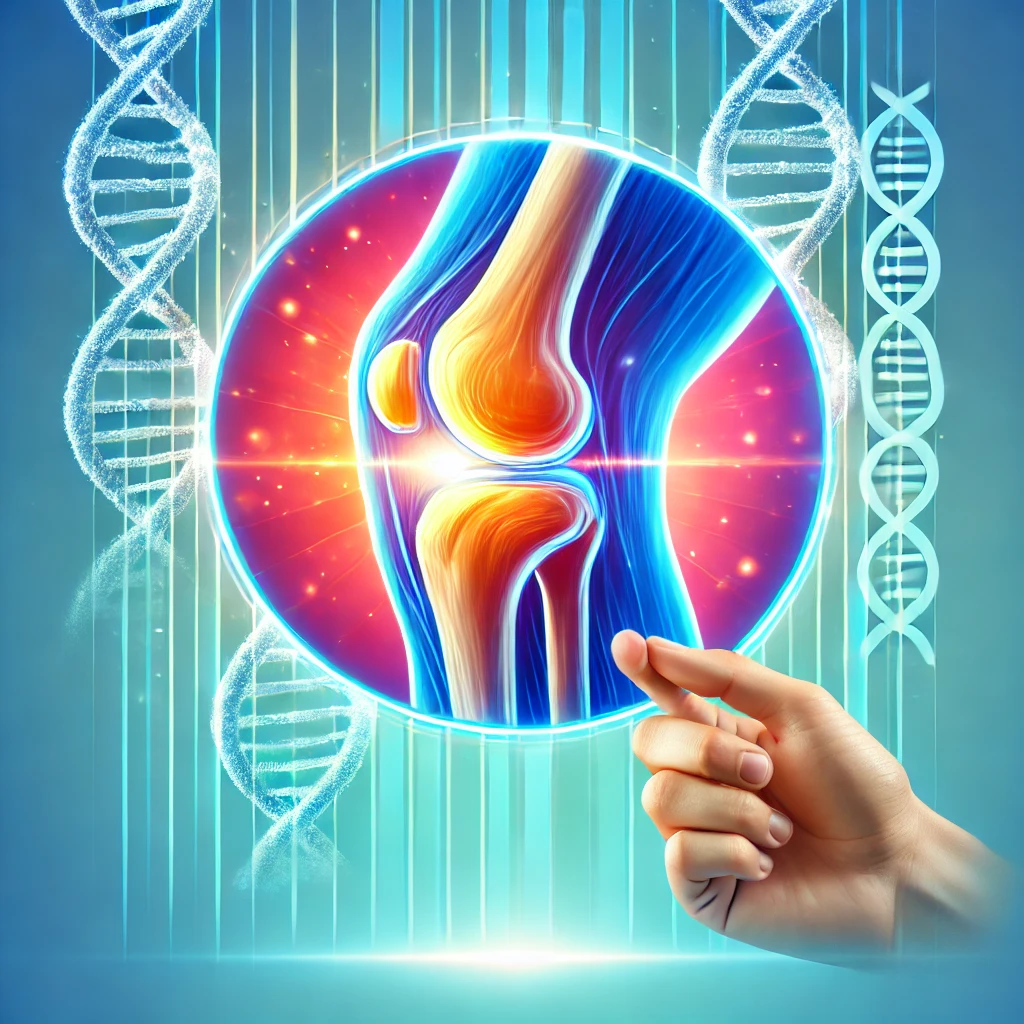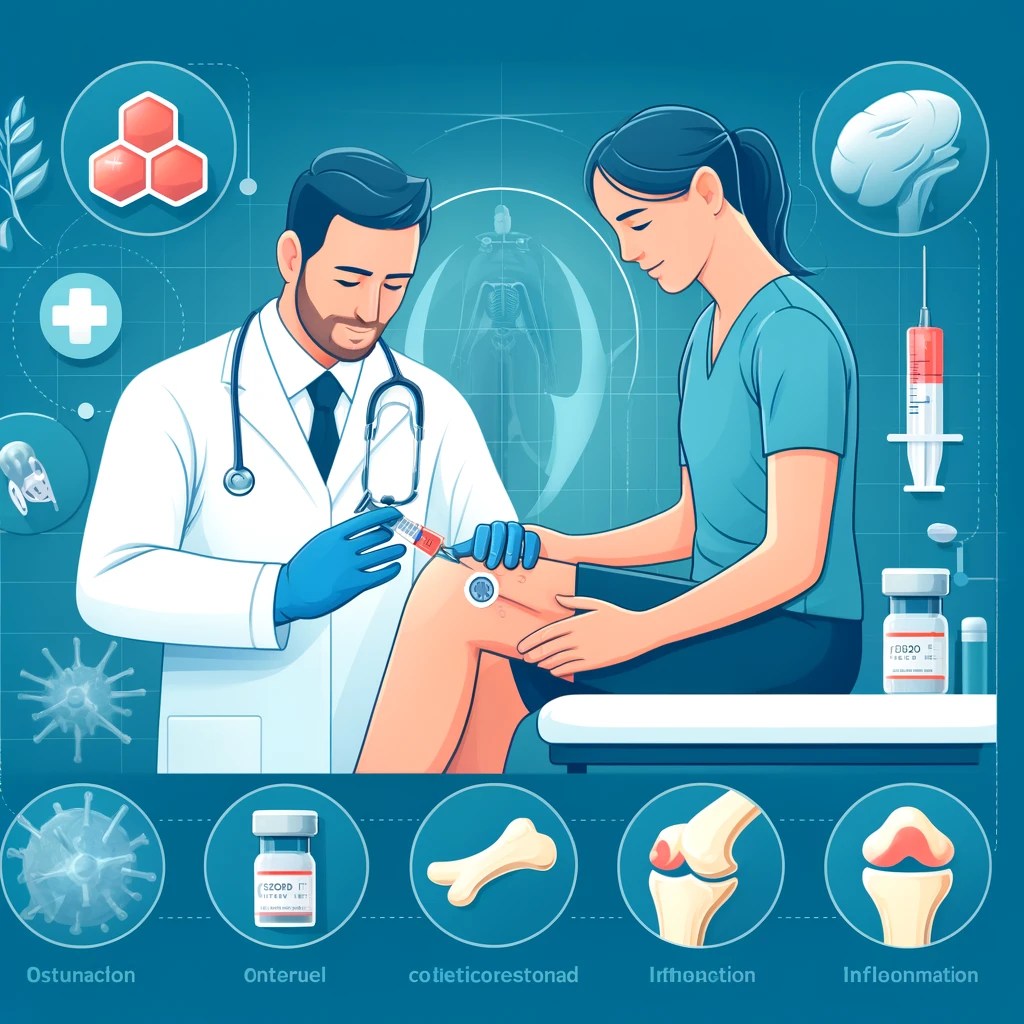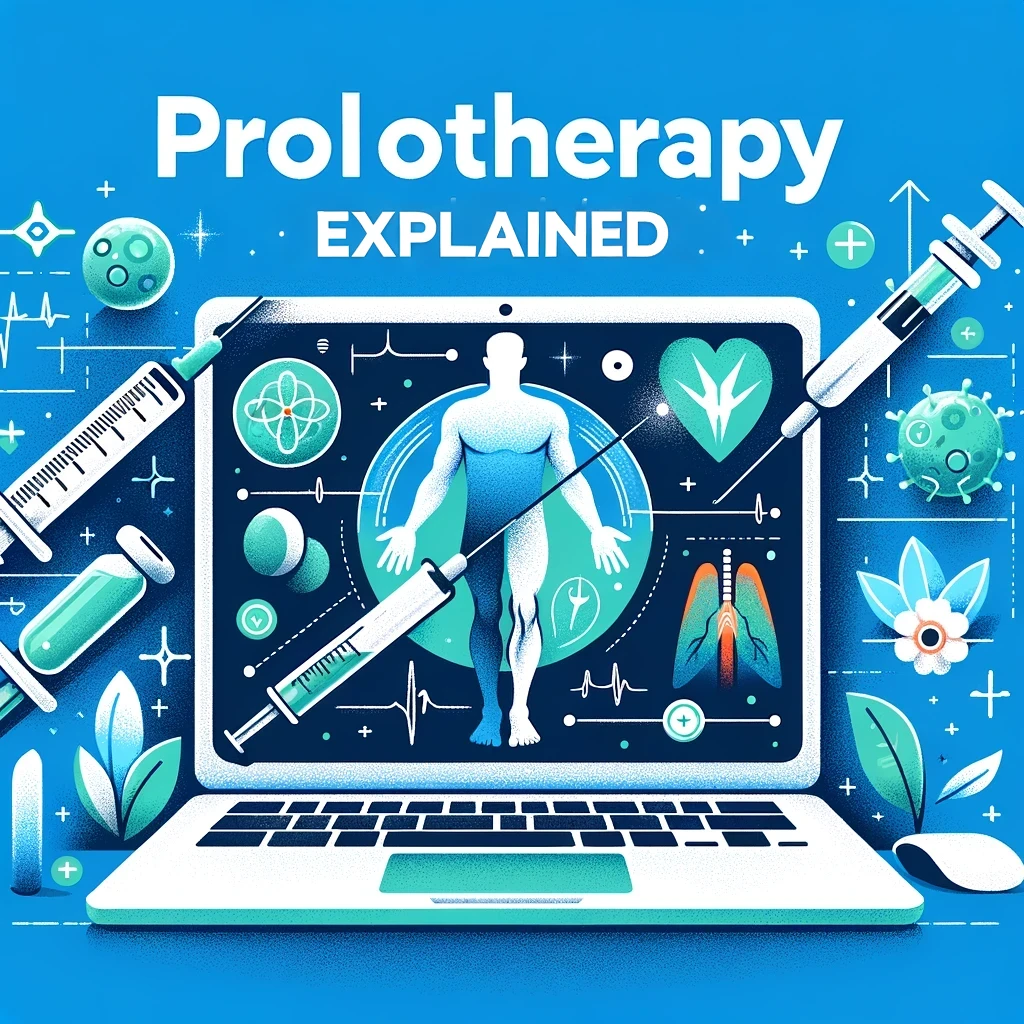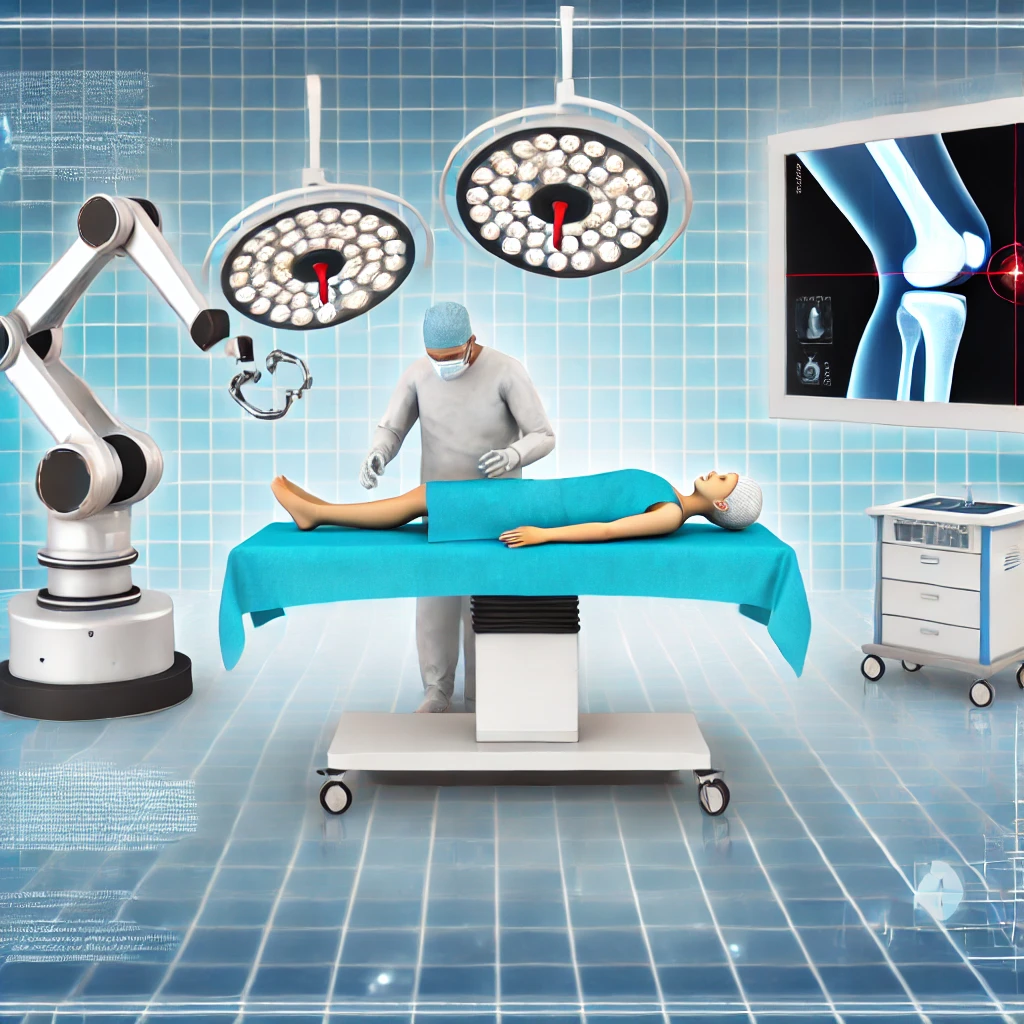
Table of Contents
Joint pain can be a debilitating condition affecting millions of people worldwide. It can stem from various causes, including arthritis, injury, and overuse. While traditional treatments like medications, physical therapy, and surgery can offer relief, they often come with limitations and side effects. Enter gene therapy – a revolutionary approach that promises to tackle joint pain at its root. But what exactly is gene therapy, and how can it help those suffering from joint pain? Let’s dive into this fascinating topic and explore the potential of gene therapy for joint pain relief.
Understanding Joint Pain
Common Causes of Joint Pain
Joint pain can result from numerous factors, including aging, autoimmune diseases and physical trauma. The most common causes include osteoarthritis, rheumatoid arthritis and gout. Each condition affects the joints differently but often results in pain, swelling, and reduced mobility.
Traditional Treatments for Joint Pain
Traditional treatments often focus on managing symptoms rather than addressing the underlying cause, leading to temporary relief rather than a long-term solution. These treatments include medications like NSAIDs, corticosteroids, physical therapy and in severe cases, surgical interventions such as joint replacement.
What is Gene Therapy?
Definition and History of Gene Therapy
Gene therapy involves altering the genes inside your body’s cells to treat or prevent disease. It started as a concept in the early 1970s and has since evolved into a promising field of medicine. By either replacing, inactivating, or introducing genes into cells, gene therapy aims to correct genetic disorders and combat diseases at a molecular level.
How Gene Therapy Works
Gene therapy works by delivering specific genetic material into cells, often using a vector like a virus to insert the new genes. These genes can then produce proteins to replace faulty ones, silence harmful genes, or introduce new functions to help combat disease and promote healing.
Gene Therapy and Joint Pain
Mechanisms of Gene Therapy in Relieving Joint Pain
Gene therapy can address joint pain by targeting the underlying genetic causes of inflammation and cartilage degradation. By modifying specific genes, this treatment can reduce inflammation, promote cartilage repair and enhance the overall function of the affected joints. Unlike traditional treatments, gene therapy aims to provide long-lasting relief by addressing the root cause of the pain.
Advantages Over Traditional Treatments
The main advantage of gene therapy over traditional treatments is its potential to offer a long-term solution. While medications and physical therapy manage symptoms, gene therapy can modify the biological processes causing the pain, potentially providing lasting relief and improving joint health.
Types of Gene Therapy for Joint Pain
Gene Editing
Gene editing involves directly modifying the DNA within a cell to correct genetic mutations that cause joint pain. Techniques like CRISPR-Cas9 allow precise changes to be made to the genome, which can address the root causes of joint diseases.
Gene Silencing
Gene silencing uses RNA molecules to block the expression of specific genes that contribute to inflammation and pain. By preventing these genes from being active, gene silencing can reduce the symptoms associated with joint pain.
Gene Augmentation
Gene augmentation involves introducing new or modified genes into cells to help repair damaged tissues and reduce pain. This method can enhance the body’s natural healing processes and improve joint function.
Current Research and Developments
Recent Studies on Gene Therapy for Joint Pain
Researchers are making significant strides in gene therapy for joint pain. Recent studies have shown promising results in animal models and early human trials. These studies focus on various techniques to deliver therapeutic genes and monitor their effects on joint health and pain relief.
Prominent Researchers and Institutions
Institutions like the Mayo Clinic and Stanford University are at the forefront of this research, exploring various gene therapy techniques to combat joint pain. These institutions are conducting clinical trials and developing innovative approaches to make gene therapy more effective and accessible.
Success Stories
Case Studies of Successful Gene Therapy Treatments
Several case studies highlight the success of gene therapy in treating joint pain. Patients who have undergone gene therapy report significant pain reduction and improved joint function. These success stories offer hope to millions of people suffering from chronic joint pain.
Testimonials from Patients
Testimonials from patients who have benefited from gene therapy provide valuable insights into the treatment’s effectiveness. Many report not only reduced pain but also enhanced mobility and a better quality of life after undergoing gene therapy.
Challenges and Risks
Potential Side Effects and Risks of Gene Therapy
Despite its potential, gene therapy is not without risks. Potential side effects include immune reactions and unintended genetic changes. Ethical considerations also play a role, as the long-term effects of gene editing are still unknown. It’s crucial for patients to weigh these risks before opting for gene therapy.
Ethical Considerations
Ethical considerations are significant in gene therapy, particularly concerning genetic modifications’ long-term effects and the potential for unintended consequences. These issues must be carefully considered in the context of treatment.
Future Prospects
Innovations on the Horizon
The future of gene therapy for joint pain looks bright. Innovations such as CRISPR technology and advanced delivery systems are paving the way for more effective and safer treatments. These advancements promise to improve the precision and efficacy of gene therapy in addressing joint pain.
Predictions for the Future of Gene Therapy in Joint Pain Relief
Experts predict that gene therapy will become a mainstream option for joint pain relief within the next decade. Continued research and development are expected to make these treatments more accessible and affordable for a broader range of patients.
Comparing Gene Therapy with Other Treatments
Effectiveness
When compared to traditional treatments, gene therapy offers several advantages. It targets the root cause of pain, provides longer-lasting relief, and has the potential to repair damaged tissues.
Cost
Gene therapy can be more expensive initially, but its potential for long-term relief may reduce overall healthcare costs by decreasing the need for ongoing treatments and interventions.
Accessibility
Currently, gene therapy is less accessible than traditional treatments due to its cost and the need for specialized facilities and practitioners. However, advancements in technology and increased research funding are expected to improve accessibility.
Getting Started with Gene Therapy
Eligibility Criteria
If you’re considering gene therapy, the first step is to determine if you’re a suitable candidate. This involves a thorough medical evaluation and consultation with a qualified practitioner. Factors like the type and severity of joint pain, overall health, and medical history are considered.
Finding a Qualified Practitioner
Choosing a reputable clinic with experience in gene therapy is crucial. Look for practitioners who are certified and have a track record of successful treatments. Research and ask for recommendations to find the best care provider.
Preparing for the Treatment
Preparation involves understanding the treatment process, potential risks, and expected outcomes. Your practitioner will guide you through the necessary steps to ensure you are ready for the procedure.
The Treatment Process
Initial Consultation
The gene therapy process typically begins with an initial consultation to assess your condition and discuss treatment options. This consultation helps determine the most suitable gene therapy approach for your joint pain.
Procedure Details
The procedure itself varies depending on the type of gene therapy but generally involves administering the modified genes through an injection. The process is usually minimally invasive and can be completed in a clinical setting.
Post-Treatment Care
Post-treatment care is crucial to monitor your progress and manage any side effects. Follow-up appointments and adherence to your practitioner’s recommendations are essential for a successful outcome.
Patient Experience
What to Expect During and After the Treatment
Patients undergoing gene therapy can expect a recovery timeline that varies based on the specific treatment and individual response. Most patients report gradual improvement in joint function and pain reduction over several weeks to months.
Recovery Timeline
Recovery timelines vary, but many patients experience significant improvements within a few weeks. Continuous monitoring and follow-up care are vital to ensure the best results.
Lifestyle Changes to Support Gene Therapy
Diet and Exercise Recommendations
To maximize the benefits of gene therapy, adopting a healthy lifestyle is essential. A balanced diet rich in anti-inflammatory foods, regular exercise, and complementary therapies like physical therapy can support your recovery and enhance the treatment’s effectiveness.
Other Complementary Therapies
Incorporating other therapies like acupuncture, massage and chiropractic care can complement gene therapy and help maintain joint health.
Conclusion
Gene therapy represents a groundbreaking approach to joint pain relief, offering hope to those who have struggled with chronic pain. By addressing the genetic causes of joint pain, this treatment has the potential to provide long-lasting relief and improve the quality of life for millions of people. As research continues to advance, gene therapy is poised to become a key player in the fight against joint pain.
FAQs
What is the main advantage of gene therapy over traditional treatments for joint pain?
Gene therapy targets the root cause of joint pain at a genetic level, potentially providing long-lasting relief and tissue repair, unlike traditional treatments that mainly manage symptoms.
Are there any risks associated with gene therapy for joint pain?
Yes, potential risks include immune reactions, unintended genetic changes and ethical considerations regarding long-term effects.
How long does it take to see results from gene therapy for joint pain?
Results vary, but most patients report gradual improvement in joint function and pain reduction over several weeks to months.
Is gene therapy for joint pain widely available?
Currently, gene therapy is more expensive and less accessible than traditional treatments, but advancements in research are expected to improve accessibility in the future.
What lifestyle changes can support the effectiveness of gene therapy for joint pain?
Adopting a healthy diet, regular exercise and complementary therapies like physical therapy can enhance the benefits of gene therapy and support overall joint health.



